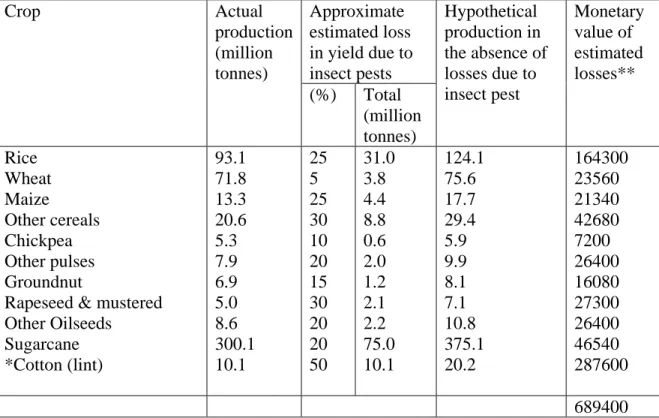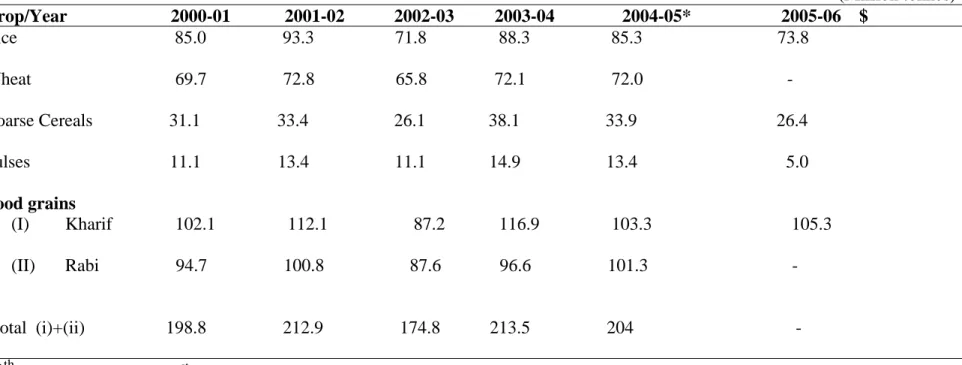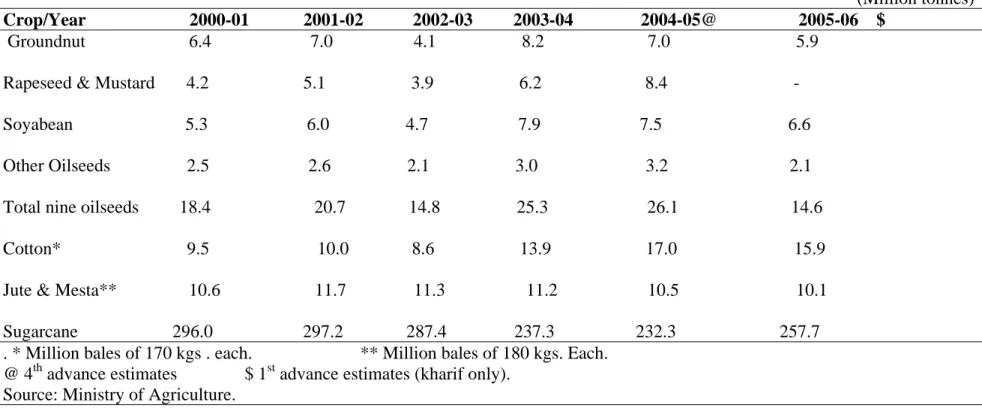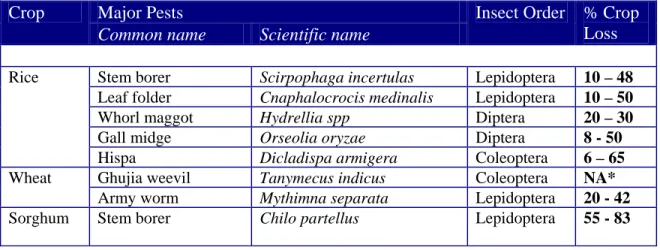Agriculture in India underwent enormous changes in the second half of the twentieth century. These two crops consume more than two-thirds of the total amount of pesticides used in the country. The final fate of a pesticide introduced into the environment through application is influenced by many processes.
Inert ingredients may be toxic to the applicator, despite the fact that they have no pesticidal action. The insecticide is drawn up the hose and out through the end of the sprayer.
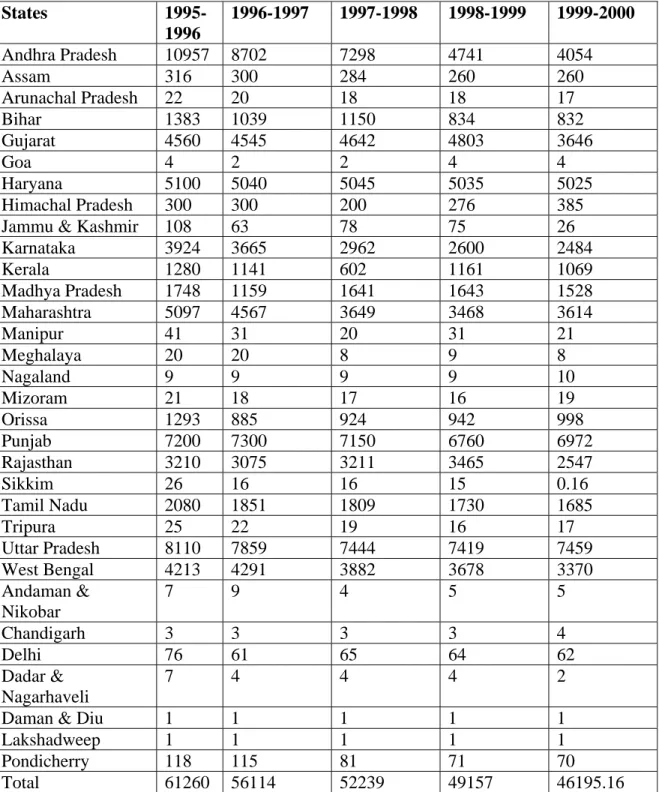
INSECT PESTS AND RECOMMENDED INSECTICIDES
Pink borer Sesamia derivation Lepidoptera NA Pod borer Helicoverpa armigera Lepidoptera 14 – 100 Pod weaver Maruca testulalis Lepidoptera 20 -60 Pigeon. Sunflower Capitulum borer Helicoverpa armigera Lepidoptera 30 – 60 Safflower Safflower caterpillar Prospalta capensis Lepidoptera NA Mustard Diamondback moth Plutella xylostella Lepidoptera NA. Tobacco caterpillar Spodoptera litura Lepidoptera NA Diamondback moth Plutella xylostella Lepidoptera 20 - 52 Cabbage weaver Crocidolomia binotalis Lepidoptera NA Cabbage.
Tinea Plutella xylostella Lepidoptera 20 - 52 Fructus surculus et teres Earias vittella Lepidoptera NA Okra. Caulis et fructus classis Leucinodes orbonalis Lepidoptera 25 – 92 Caulis foliumhopper Euzophera perticella Lepidoptera NA Hadda scarabaeorum Epilachna. Fructus teredini Spodoptera litura Lepidoptera NA Melon fructus muscae Dacus cucurbitae Diptera 50 -100 Cucurbita beetle Raphidopalpa foveicollis Coleoptera NA.
Today, the use of chemical pesticides remains one of the important methods of controlling pests. The introduction of high yielding varieties together with increasing application of agrochemicals has increased the productivity of land with a concomitant increase in the proportion lost to insect pests in India and other developing Asian countries leading to the development of insect resistance which in the later part of the chapter. In addition, the adverse effects on the environment, the disadvantages of using the pesticides include the development of resistance and increasing cost of pesticides.
Thus, IPM is always in the context of the environment and population dynamics of the pest species.
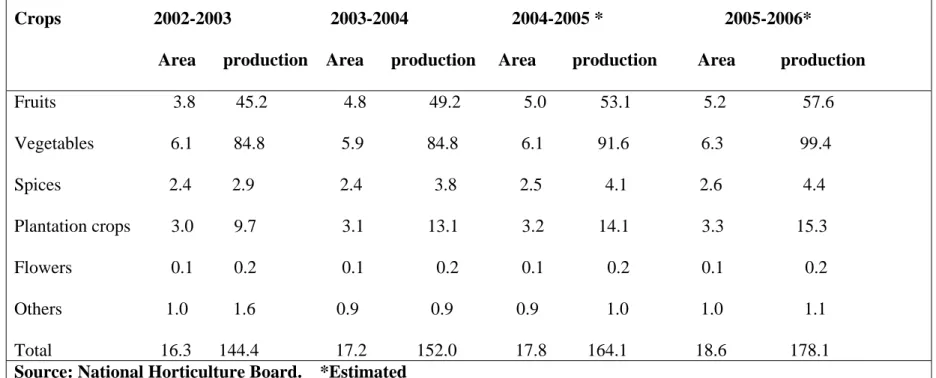
INSECTICIDE RECOMMENDATIONS, APPLICATION, REGULATION AND CONTROL AGENCIES
There are a total of 3 pesticide/pesticide formulations that are prohibited for use, but nevertheless, their production is allowed for export and a total of 7 pesticides are restricted. The general overuse of pesticides led to the resurgence of small pests, ecological imbalance, pesticide residues in food and environmental pollution. In 1962, Rachel Carson published her book "Silent Spring" where she emphasized the misuse and overuse of pesticides in the environment.
The Ministry of Agriculture monitors the manufacture, sale, import, export and use of pesticides through the appropriate rules and regulations. Due to the death of more than 100 people due to pesticide poisoning in Kerala in 1958, the Insecticide Act was passed. For MRL determination of the insecticide, data collected by the University of Agriculture is sent to the Department of Health under the PFA [Prevention of Food Adulteration Act, 1954].
The Registration Committee checks all this information in their meeting and advises the name of the insecticide to the Ministry of Agriculture. The Central Insecticides Board (CIB), established under Section 4 of the Act, provides advice to the Central and State Governments on the technical matters arising from the implementation of the Act and on the performance of such other functions. The Registration Commission {RC}, established under Section 5 of the Act, registers insecticides under Section 9 of the Act after it has satisfied itself of its effectiveness and safety for humans, animals and the environment.
The Central Insecticide Laboratory (CIL), Faridabad, established under Section 5 of the Act, acts as a reference laboratory for quality control of pesticides.
Pesticide Control Legislation
Insecticides and environment
Dry soil absorbs more insecticide than wet soil because water molecules compete with the insecticide for the binding sites in the wet soil. Due to the persistence of insecticides, some insecticides remain in the soil long enough to be absorbed by plants grown in the field later. The insecticide with a low persistence (which is quickly broken down by a decomposition process) is less likely to leach because it only remains in the soil for a short time.
Insecticides can move as compounds dissolved in water or attached to eroding soil particles. When conditions such as sufficient oxygen and soil moisture, warm temperature and favorable pH are present, microbial decomposition increases. ii) Chemical degradation is the breakdown of insecticides by chemical reactions in the soil. Vaporization is the evaporation of the active ingredient during or after application. they move easily through the air.
Insecticides are harmful to non-target organisms in two ways: insecticides can harm by contact, or. insecticides can leave residues that cause later damage. a) Harmful effects from direct contact. In general, the risk posed by an insecticide to wildlife is related to the type of insecticide, its toxicity, the dose, the number of applications, the proximity of the application site to wildlife habitat, the persistence of the insecticide, and its ability to focused on the wildlife food chain. (biomagnification). The progressive use of insecticides has reached massive amounts in the last 40-50 years and has caused harmful effects on aquatic life forms.
The extensive increase in insecticide use from 1980-1985 resulted in the destruction of natural enemies of the major pest: brown planthopper.
Insect Resistance
This led to a serious failure of rice production, turning Indonesia from an exporter to an importer. The reproductive potential of the population, i.e. the number of generations per year. Initially, when insecticides are applied to control the insect pests, satisfactory control is achieved. Repeated use of the same insecticide increases the frequency of resistant insects, occasionally leading to crop losses.
But the continuous use of the insecticide leads to the huge increase in the growth rate of the population of the resistant insect pest and the insecticide becomes ineffective. Glutathione S-Transferases, which catalyze the conjugation of the molecule with the thiol (SH) group of glutathione. Altered targeting of the site of action of the insecticide leads to the insensitivity of the insecticide. ii) Morphological factors: Such as insect cuticles reduce the penetration of the insecticide into the insect's body. iii) Genetic factor: Several recessive genes like kdr gene (knockdown resistance gene) are present in different frequencies in a population and are responsible for developing resistance among the insect population. iv).
Ecological factor: Geographical location is one of the considerations of insect resistance. v) Ethological factor: Sometimes behavioral resistance is also observed among the insects. In other words, cross-resistance is a specific mechanism that confers resistance to two or more compounds involving the same gene. Rotation or change of the different insecticides or the use of mixtures of insecticides - use of different insecticides with different modes of action can nullify each other's resistance.
One or another combination of the methods prescribed above will certainly lead to suppression of the development of insect resistance.
SUMMARY
Institutes like CIB-RC [Central Insecticide and Registration Board], agricultural universities, Ministry of Health and Ministry of Agriculture play an important role in recommending insecticides so that they can be used to increase crop yields. So all this work of registration, regulation and use of insecticides is monitored by the above-mentioned organizations and they work in accordance with each other. Beneficial when the insecticide moves to the target area, and harmful when there is reduced control of the target pest, injury to non-target plants and animals, and environmental damage.
Degradation is the process of insecticides being broken down by microbes (Microbial degradation), chemical reactions (Chemical degradation) or light (Photo degradation). The presence of insecticides in soil can adversely affect soil organisms, beneficial plants, animals, and human health. Thinning of eggshells is caused due to carbonic anhydrase inhibition by DDT and its metabolites, which led to a significant decrease in reproduction rates in birds of prey.
So the concept of integrated pest management emphasizes the maximum use of natural enemies of the pest supplemented with selective insecticides when necessary. Resistance is defined as the ability to develop tolerance to doses of an insecticide that would prove lethal to most individuals in a normal population of the same species. The development of resistance means a large economic loss as well as increased risks due to higher amounts of pesticides used.
Therefore, to prevent insecticide resistance and to protect the environment, a number of strategic management practices are recommended.
TERMINOLOGY
Economic injury level The pest population density sufficient to cause economic losses greater than the economic cost of the control action to reduce pest densities. Insect resistance The genetic phenomenon of developing tolerance to doses of an insecticide that would be lethal to the majority of individuals in a normal population of the same species. Leaching A phenomenon of the movement of pesticides (dissolved in water molecules of the soil) through the soil rather than over the surface.
Lethal damage The damage to the cell, causing the cell to die. The rate of degradation depends on the light intensity, the duration of exposure and the properties of the insecticide. When the water (mixed with pesticide) is turned on, the suction created by the water flowing over the top of the tube pulls the pesticide concentrate up and into the stream of hose water.
Solutes Molecules of toxic or solvent substances mix uniformly with solvent molecules. Synergy or synergism (from synergos meaning to work together) refers to the phenomenon in which two or more or agents acting together create an effect greater than the sum of the effects each could create independently . Toxic or toxic Refers to the quality, state, or degree of being poisonous.
The inlet tube of the syringe is inserted into the mixture in the bucket and pump pressure is created.
